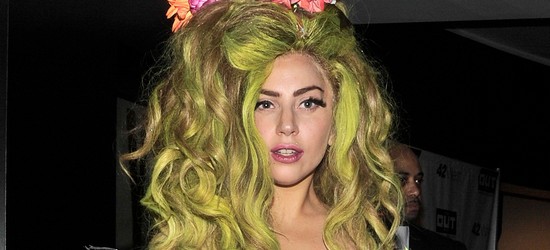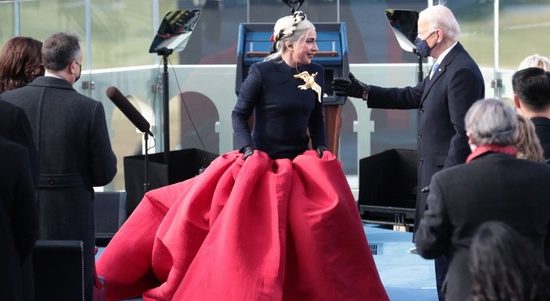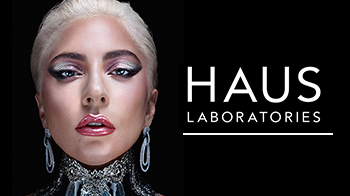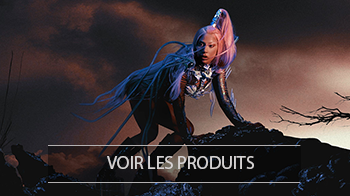
Dans le cadre de ses concerts au Roseland Ballroom, Lady Gaga a reçu le journaliste John Seabrook du New Yorker et s’est confié à lui durant les répétitions de son show.
Retrouvez ci-dessous l’article en anglais et en français.
Article en Anglais
Roseland Ballroom is the latest (but surely not the last) of New York City’s storied music venues to close its doors. Lady Gaga’s seven-show run, which began last Friday, on her twenty-eighth birthday, will be the final one at the Fifty-second Street theatre, which has been at its present location since 1958, when it took over a building that once housed the Gay Blades Ice Rink. The three-story structure, with its Art Deco bar, will soon be razed and replaced with a fifty-nine-story residential tower. The place where Kurt Cobain miraculously recovered from a near O.D. to play a Nirvana show, in 1993, and where, in 2000, Fiona Apple had a spectacular mid-performance meltdown and fled the stage will be no more.
For Gaga, the farewell shows mark her first time ever on the Ballroom stage. “It’s basically the only room in the city I haven’t played,” she said the other day, during a break in rehearsals for the twelve-song performance.
Playing in New York clubs was “where I learned to be bold,” Gaga said, as the dancers took a break in the back. She paused, shaking out her white wig. “You have to learn to be unafraid when you’re a nobody, because you’re going to be really fucking afraid when you’re a somebody and all the lights are on you.” Although she rarely plays clubs or theatres anymore, “when I’m in an arena or a stadium, I always need to have that bar connection, that club mentality and energy.”
She went on, “You start by singing to yourself. And you go, ‘I sound good.’ And then you think, But do I really sound good? And to find out, you have to put it in a room.”
She put it in the room at the Bitter End, the Village venue where she performed in public for the first time, aged fifteen, as Stefani, her given name. “You sing a song and people start singing it back to you,” Gaga said. “But how do they know the song? Why are they dressing like me? So you begin to understand the potential of what music can be.”
From there, she put it in the room at Arlene’s Grocery and at Rockwood Music Hall, on the Lower East Side, where the Lady Gaga performance-art persona first appeared. She would rehearse in her tiny apartment on Stanton Street, with turntables on the stove burners. One night, performing for thirty people in Rockwood’s cramped space, her mentor and collaborator Lady Starlight said, “ ‘Gaga, look out the window.’ And there were a hundred people on the street with cameras taking pictures!”
She also learned to sell herself in rooms. “You have to have the ambition to impress the guy who is going to have coffee with Puffy in the Hamptons that weekend,” Gaga said. “Why should he give you that million-dollar check? So you open your mouth and hit that note that sends vibrations to his core in a way that blows his mind and makes him want to be the one to say, ‘I found her.’ ”
The dancers floated back onto the Ballroom floor, and Gaga ran through “Bad Romance,” puffing like a miler when the number ended; she was a little under the weather. (“I had my sinuses vacuumed out this morning.”) The room seemed to like what it heard.
Playing Roseland, Gaga said, was always a dream. As a young fan, she couldn’t afford tickets. She did manage to win freebies to a Franz Ferdinand show during her senior year of high school at Sacred Heart, and she got her nose broken in the mosh pit. She tried to reduce the swelling with cold beer purchased with her fake I.D. (Delaware), but her mother got the story out of her. After that, “my mom and dad didn’t want me going to Roseland—what a shocker, right?” Once her career took off, with the release of “The Fame,” in 2008, she went from small places to big ones, and bypassed Roseland altogether.
Her parents, Cynthia and Joe Germanotta, were on hand to watch the rehearsal. Although they no longer worried about their daughter getting her nose broken, talk of Cobain’s show and his subsequent suicide and the price of fame clearly pained her mother.
“He just didn’t want to be famous,” Gaga said, with a shrug. Apparently, that isn’t her problem.
For Gaga, the farewell shows mark her first time ever on the Ballroom stage. “It’s basically the only room in the city I haven’t played,” she said the other day, during a break in rehearsals for the twelve-song performance.
Playing in New York clubs was “where I learned to be bold,” Gaga said, as the dancers took a break in the back. She paused, shaking out her white wig. “You have to learn to be unafraid when you’re a nobody, because you’re going to be really fucking afraid when you’re a somebody and all the lights are on you.” Although she rarely plays clubs or theatres anymore, “when I’m in an arena or a stadium, I always need to have that bar connection, that club mentality and energy.”
She went on, “You start by singing to yourself. And you go, ‘I sound good.’ And then you think, But do I really sound good? And to find out, you have to put it in a room.”
She put it in the room at the Bitter End, the Village venue where she performed in public for the first time, aged fifteen, as Stefani, her given name. “You sing a song and people start singing it back to you,” Gaga said. “But how do they know the song? Why are they dressing like me? So you begin to understand the potential of what music can be.”
From there, she put it in the room at Arlene’s Grocery and at Rockwood Music Hall, on the Lower East Side, where the Lady Gaga performance-art persona first appeared. She would rehearse in her tiny apartment on Stanton Street, with turntables on the stove burners. One night, performing for thirty people in Rockwood’s cramped space, her mentor and collaborator Lady Starlight said, “ ‘Gaga, look out the window.’ And there were a hundred people on the street with cameras taking pictures!”
She also learned to sell herself in rooms. “You have to have the ambition to impress the guy who is going to have coffee with Puffy in the Hamptons that weekend,” Gaga said. “Why should he give you that million-dollar check? So you open your mouth and hit that note that sends vibrations to his core in a way that blows his mind and makes him want to be the one to say, ‘I found her.’ ”
The dancers floated back onto the Ballroom floor, and Gaga ran through “Bad Romance,” puffing like a miler when the number ended; she was a little under the weather. (“I had my sinuses vacuumed out this morning.”) The room seemed to like what it heard.
Playing Roseland, Gaga said, was always a dream. As a young fan, she couldn’t afford tickets. She did manage to win freebies to a Franz Ferdinand show during her senior year of high school at Sacred Heart, and she got her nose broken in the mosh pit. She tried to reduce the swelling with cold beer purchased with her fake I.D. (Delaware), but her mother got the story out of her. After that, “my mom and dad didn’t want me going to Roseland—what a shocker, right?” Once her career took off, with the release of “The Fame,” in 2008, she went from small places to big ones, and bypassed Roseland altogether.
Her parents, Cynthia and Joe Germanotta, were on hand to watch the rehearsal. Although they no longer worried about their daughter getting her nose broken, talk of Cobain’s show and his subsequent suicide and the price of fame clearly pained her mother.
“He just didn’t want to be famous,” Gaga said, with a shrug. Apparently, that isn’t her problem.
Article en Français
Le Roseland Ballroom n’est sûrement pas le dernier des lieux musicaux historiques de New York City à fermer ses portes, mais c’est le dernier en date. La série de sept shows de Lady Gaga, qui a commencé vendredi dernier, pour son vingt-huitième anniversaire, sera la dernière pour le théâtre de la 52ème Rue, érigé à cet endroit depuis 1958, dans un bâtiment qui hébergea autrefois le Gay Blades Ice Rink. La structure de trois étages, avec son bar Art Déco, sera bientôt rasée et remplacée par une tour résidentielle de 59 étages. L’endroit où Kurt Cobain s’est miraculeusement remis d’une quasi-overdose pour jouer à un concert de Nirvana en 1993, et où en 2000, Fiona Apple s’est effondrée de manière spectaculaire en plein milieu d’une performance et a fui la scène –cet endroit ne sera plus.
Pour Gaga, les shows d’adieu marque sa toute première fois sur la scène du Ballroom. « C’est en gros le seul endroit en ville où je n’ai pas joué, » disait-elle l’autre jour, pendant une pause des répétitions de la performance de douze chansons.
Jouer dans les clubs de New York est « là où j’ai appris à être téméraire, » dit Gaga, alors que ses danseurs font une pause un peu plus loin. Elle fait une pause, secouant sa perruque blanche. « Tu dois apprendre à ne pas avoir peur lorsque tu es personne, car tu vas vraiment avoir peur lorsque tu seras quelqu’un et que toutes les lumières seront sur toi. » Bien qu’elle ne joue plus dans les clubs ou les théâtres, « lorsque je suis dans une aréna ou un stade, j’ai toujours besoin d’avoir cette connexion qu’on retrouve dans un bar, cette mentalité et cette énergie de club. »
Elle continue, « Tu commences par chanter pour toi-même. Et tu te dis ‘Ça sonne bien’. Puis tu te demandes si ça sonne vraiment bien. Pour le découvrir, tu dois le faire dans une salle. »
Elle s’est produite au Bitter End, une salle du Village où elle a performé pour la première fois en public, à l’âge de 15 ans, en tant que Stefani, son nom de naissance. « Tu chantes une chanson et les gens commencent à la chanter en retour, » dit Gaga. « Mais comment connaissent-ils la chanson ? Pourquoi s’habillent-ils comme moi ? Alors tu commences à comprendre le potentiel de ce que la musique représente. »
De là, elle est passée à l’Arlene Grocery et au Rockwood Music Hall, dans le Lower East Side, où les performances artistiques du personnage de Lady Gaga sont apparues pour la première fois. Elle répétait dans son minuscule appartement de Stanton Street, avec les platines posées sur la cuisinière. Une nuit où elle performait pour trente personnes dans l’espace étroit du Rockwood, sa mentor et collaboratrice Lady Starlight a dit : « ‘Gaga, regarde par la fenêtre.’ Et il y avait une centaine de personnes dans la rue qui prenaient des photos ! »
Elle a aussi appris à se vendre dans ses salles. « Tu dois avoir l’ambition d’impressionner le mec qui va prendre un café avec Puffy dans les Hamptons le weekend suivant, » dit Gaga. « Pourquoi te donnerait-il ce chèque d’un million de dollars ? Alors tu ouvres ta bouche, tu lances cette note qui envoie des vibrations dans son cœur d’une manière qui lui en met plein la vue et qui fait qu’il veuille être celui qui dit, ‘Je l’ai trouvée’. »
Les danseurs flottent de nouveau sur le sol du Ballroom, et Gaga répète Bad Romance ; elle souffle comme une marathonienne après que la chanson soit terminée, pas trop dans son assiette. (« J’ai eu un lavage des sinus ce matin. ») Les gens dans la pièce semblent avoir apprécié ce qu’ils ont entendu.
Jouer au Roseland, dit Gaga, a toujours été un rêve. En tant que jeune fan, elle ne pouvait pas se payer de tickets. Elle a réussi à gagner des tickets pour un concert de Franz Ferdinand durant sa dernière année au lycée du Sacré Cœur, et elle s’est fait casser le nez dans la fosse. Elle a essayé de réduire le gonflement avec de la bière froide achetée avec sa fausse pièce d’identité (du Delaware), mais sa mère lui a fait lâcher le morceau. Après ça, « ma mère et mon père ne voulaient plus que j’aille au Roseland – quelle horreur, n’est-ce pas ? » Une fois que sa carrière a été lancé, avec la sortie de The Fame en 2008, elle est passée des petites salles aux grandes, et a complètement dévié du Roseland.
Ses parents, Cynthia et Joe Germanotta, étaient dans le coin pour regarder les répétitions. Bien qu’ils ne se soucient plus que leur fille puisse se casser le nez, parler du show de Cobain, de son suicide ultérieur et du prix de la célébrité a clairement peiné sa mère.
« Il ne voulait juste pas être célèbre, » dit Gaga, en haussant les épaules. Apparemment, cela n’est pas son problème.
Pour Gaga, les shows d’adieu marque sa toute première fois sur la scène du Ballroom. « C’est en gros le seul endroit en ville où je n’ai pas joué, » disait-elle l’autre jour, pendant une pause des répétitions de la performance de douze chansons.
Jouer dans les clubs de New York est « là où j’ai appris à être téméraire, » dit Gaga, alors que ses danseurs font une pause un peu plus loin. Elle fait une pause, secouant sa perruque blanche. « Tu dois apprendre à ne pas avoir peur lorsque tu es personne, car tu vas vraiment avoir peur lorsque tu seras quelqu’un et que toutes les lumières seront sur toi. » Bien qu’elle ne joue plus dans les clubs ou les théâtres, « lorsque je suis dans une aréna ou un stade, j’ai toujours besoin d’avoir cette connexion qu’on retrouve dans un bar, cette mentalité et cette énergie de club. »
Elle continue, « Tu commences par chanter pour toi-même. Et tu te dis ‘Ça sonne bien’. Puis tu te demandes si ça sonne vraiment bien. Pour le découvrir, tu dois le faire dans une salle. »
Elle s’est produite au Bitter End, une salle du Village où elle a performé pour la première fois en public, à l’âge de 15 ans, en tant que Stefani, son nom de naissance. « Tu chantes une chanson et les gens commencent à la chanter en retour, » dit Gaga. « Mais comment connaissent-ils la chanson ? Pourquoi s’habillent-ils comme moi ? Alors tu commences à comprendre le potentiel de ce que la musique représente. »
De là, elle est passée à l’Arlene Grocery et au Rockwood Music Hall, dans le Lower East Side, où les performances artistiques du personnage de Lady Gaga sont apparues pour la première fois. Elle répétait dans son minuscule appartement de Stanton Street, avec les platines posées sur la cuisinière. Une nuit où elle performait pour trente personnes dans l’espace étroit du Rockwood, sa mentor et collaboratrice Lady Starlight a dit : « ‘Gaga, regarde par la fenêtre.’ Et il y avait une centaine de personnes dans la rue qui prenaient des photos ! »
Elle a aussi appris à se vendre dans ses salles. « Tu dois avoir l’ambition d’impressionner le mec qui va prendre un café avec Puffy dans les Hamptons le weekend suivant, » dit Gaga. « Pourquoi te donnerait-il ce chèque d’un million de dollars ? Alors tu ouvres ta bouche, tu lances cette note qui envoie des vibrations dans son cœur d’une manière qui lui en met plein la vue et qui fait qu’il veuille être celui qui dit, ‘Je l’ai trouvée’. »
Les danseurs flottent de nouveau sur le sol du Ballroom, et Gaga répète Bad Romance ; elle souffle comme une marathonienne après que la chanson soit terminée, pas trop dans son assiette. (« J’ai eu un lavage des sinus ce matin. ») Les gens dans la pièce semblent avoir apprécié ce qu’ils ont entendu.
Jouer au Roseland, dit Gaga, a toujours été un rêve. En tant que jeune fan, elle ne pouvait pas se payer de tickets. Elle a réussi à gagner des tickets pour un concert de Franz Ferdinand durant sa dernière année au lycée du Sacré Cœur, et elle s’est fait casser le nez dans la fosse. Elle a essayé de réduire le gonflement avec de la bière froide achetée avec sa fausse pièce d’identité (du Delaware), mais sa mère lui a fait lâcher le morceau. Après ça, « ma mère et mon père ne voulaient plus que j’aille au Roseland – quelle horreur, n’est-ce pas ? » Une fois que sa carrière a été lancé, avec la sortie de The Fame en 2008, elle est passée des petites salles aux grandes, et a complètement dévié du Roseland.
Ses parents, Cynthia et Joe Germanotta, étaient dans le coin pour regarder les répétitions. Bien qu’ils ne se soucient plus que leur fille puisse se casser le nez, parler du show de Cobain, de son suicide ultérieur et du prix de la célébrité a clairement peiné sa mère.
« Il ne voulait juste pas être célèbre, » dit Gaga, en haussant les épaules. Apparemment, cela n’est pas son problème.









« Je ne voulais juste pas être célèbre » … BA DUM TSSSS !!
« Il ne voulait juste par être célèbre » faut bien lire